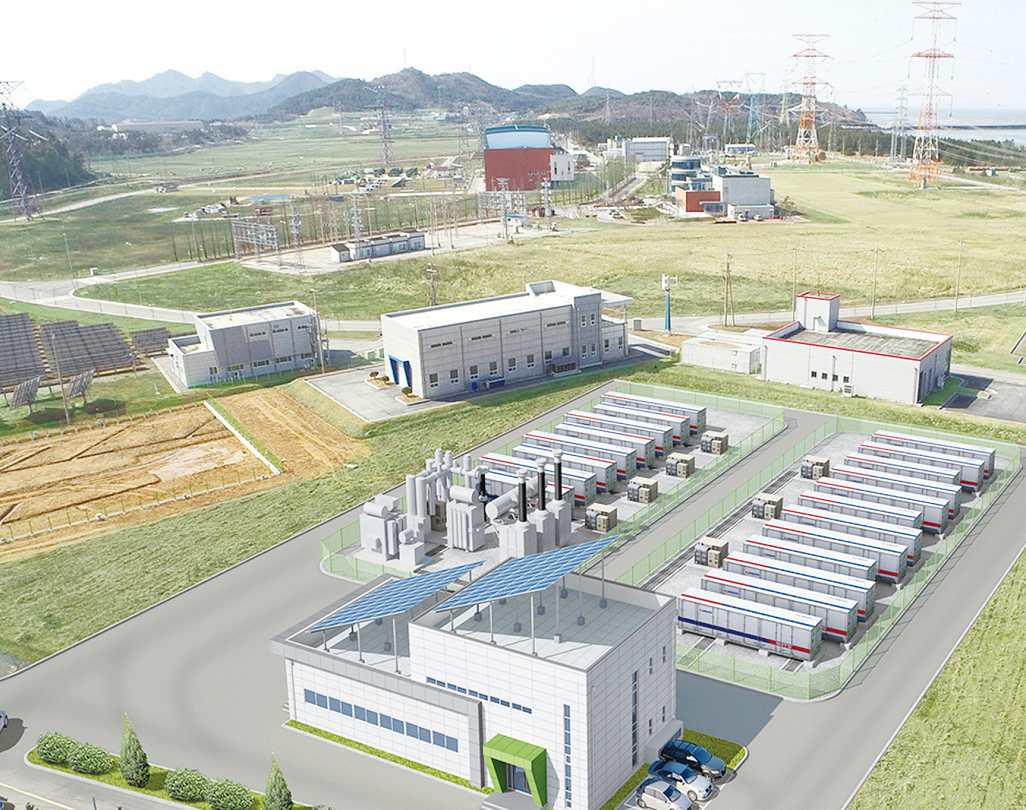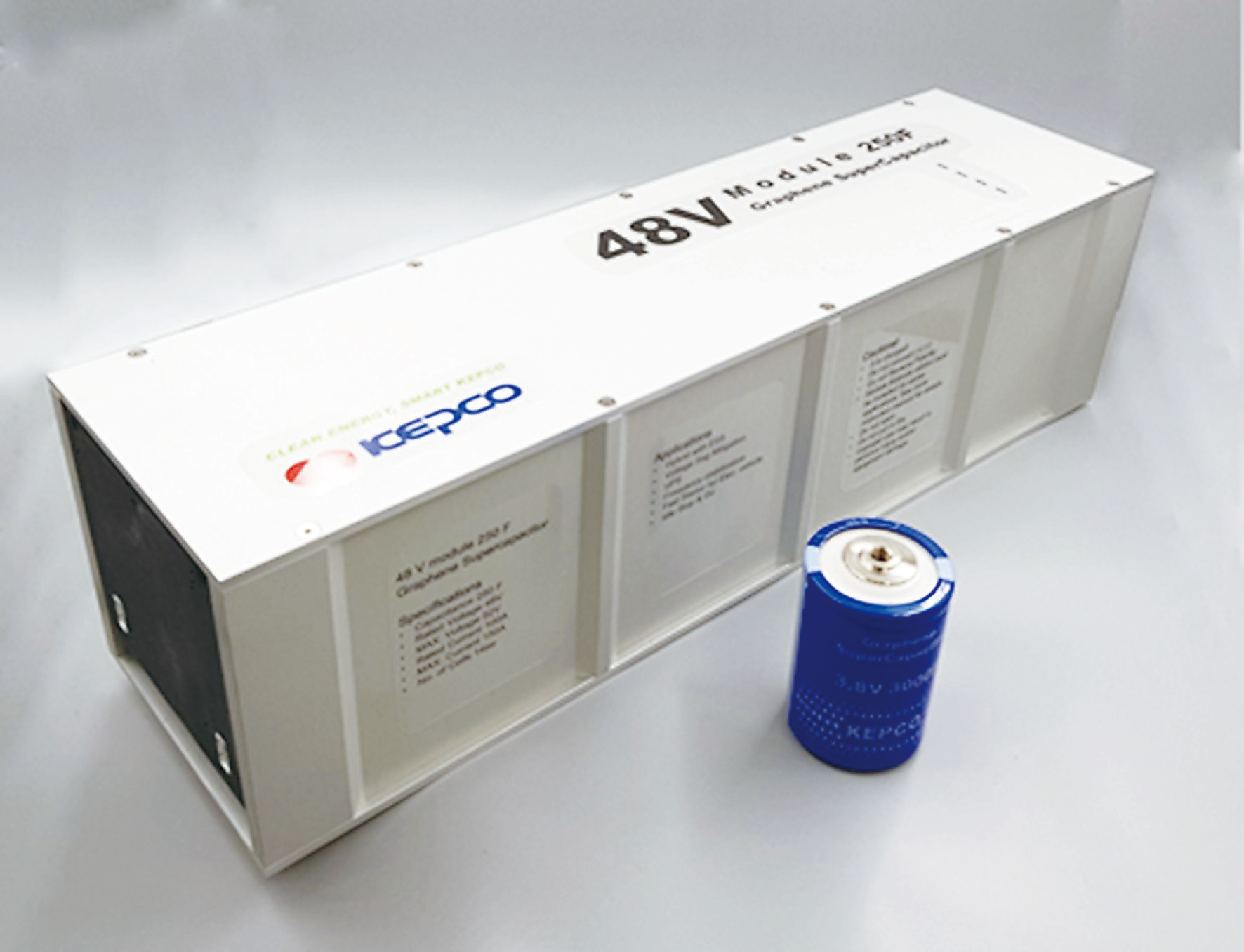Convergence Technology Laboratory
Fields of our research Convergence Technology LaboratoryThe New & Renewable Energy Laboratory was established in alignment with the renewable energy supply policy of Korean government and KEPCO to contribute to the commercialization and expansion of related industries with convergence technologies in renewable energy resource usage, energy storage and transition, and new electric materials. In the renewable energy category, the focus is on life-cycle technologies in offshore wind farm development and supply, and research in increasing social acceptance in cooperation with other industries and these include initiatives related to the agro-photovoltaic sector and collaboration between the fishery industry and offshore wind farms. In the advanced and new material category, research efforts into various technologies including graphene supercapacitors to increase energy usage efficiency, Perovskite solar cells, superconductive cables, and for the electrochemical conversion and storage field, hydrogen energy and fuel cells including SOFC and next generation secondary battery cells are under development. Also, ESS technologies including battery management technology for power system's frequency quality improvement are in progress.
Offshore Wind Farm Development, Management and Coexistence Technology
Under the vision ‘Global Top OWF R&D Hub', life-cycle R&D is being undertaken to promote continuous innovation and secure growth engines in the domestic offshore wind farm industry. Resource assessment and wind farm design for South-West demonstration offshore wind farm have been carried out, and integrated SCADA and CMS(Condition Monitoring System) were developed to enhance management and O&M. Also, to reduce installation costs, field demonstrations for suction bucket foundations were undertaken and MMB (Multipurpose Mobile Base) installation vessel development was carried out. Also, Research that facilitates cooperation among local communities to promote renewable energy development is urgently needed. Development of offshorefishery industry collocation research and utility-scale agrophotovoltaic research are being conducted to create a co-existence ecosystem with local communities and eco-friendly and safe farm management technologies are being developed through offshore wind farm environmental monitoring and safety standards establishment. Through lifecycle technology R&D focusing on increasing reliability and the economic feasibility of offshore wind farms as well as social acceptance, we are playing a crucial role in contributing to the national strategic project of developing the South-West 2.4GW offshore wind farm.
Flexible Energy Technology
In order to cope with the frequency instability of the future power system caused by the rapid increase in renewable energy, new flexible energy resources and operation technologies are being developed. First, the world's largest MW-class frequency adjustment supercapacitor system was constructed by further improving the capacity of supercapacitors with characteristics such as high output density, high-speed charge/discharge, and long life. The demonstration operation was completed by developing next-generation operation technologies such as independent and cooperative operation with batteries. As another new flexible resource, the world's first 20Ah-class manganese-based secondary battery was developed, aiming to commercialize it by improving energy density and lifespan characteristics, and developing process technologies. For the stable operation of flexible energy resources, a technology that diagnoses the lifespan and abnormal conditions of batteries autonomously has been developed and applied to ESS for frequency adjustment and system stabilization operated by KEPCO. In the future, it will be applied to new flexible resources alongside the advancement of diagnostic technology.
Perovskite Solar Sells
We are developing semi-transparent, high-efficiency solar cells that use perovskite, which consists of superior photoactive materials that have high photoelectric conversion efficiency comparable to that of silicon solar cells, and are capable of manufacturing lightweight, transparent and flexible solar cells at relatively low cost. The inverted structure flat-panel solar cell (1cm2) achieved the world's highest efficiency of 23.2%, while demonstrating an efficiency of 18.6% in the large-area module (100cm2). Furthermore, it maintained an initial efficiency of 90% even after undergoing a 2,000-hour artificial solar test, ensuring durability for commercialization. Currently, it is manufacturing a 10W prototype and conducting research oriented towards commercialization, including the development of optimal manufacturing processes. Its ultimate goal is to develop and commercialize prototypes of glass arc solar cells for the market.
Superconducting Cable
Superconducting cables are power transmission cables that can deliver 5times more energy and reduce power losses by 25% compared to conventional copper cables. The aims of this project include developing both superconducting cables that costs 30% less than conventional cables and a new power delivery business model using superconducting cables. It is expected that the superconducting cable and the business model can solve problems related to the environment and public acceptance that the transmission system is currently facing. Superconducting cables will be able to construct efficient and economic power grids in densely populated urban areas and increase power delivery capacity through utilizing limited space fully and improving the existing facility environment with underground power delivery systems.
Electrochemical Energy Technology Field
Using hydrogen which is regarded as a next generation clean energy source, KEPRI is carrying out research to develop an integrated system which can produce electric power. The hydrogen is produced and stored from renewable energy(wind, sunlight, etc.) by the water electrolysis method and is used to produce electric power through fuel cells when it is needed. In the field of fuel cells, KEPRI developed a high efficiency 3kW, 20 kW SOFC system by developing a stack and BOP related integrated type reformer, and developed a 1 kW PEMFC-battery hybrid system and optimal control technology. To develop a high performance VRFB model, KEPRI is designing high power and high energy density stacks and developing a comprehensive operating system. In addition, life predictions model of lithium secondary batteries, operation technology for long life and battery efficient operation technology are being advanced through the development of performance evaluation and status diagnosis technology for lithium secondary batteries applied to ESS, which is being expanded. In addition, research on the development of next generation manganese and water-based rechargeable batteries is being carried out in order to solve issues related to high costs and safety problems such as ignition / burnout.



